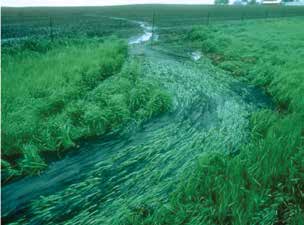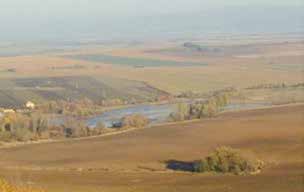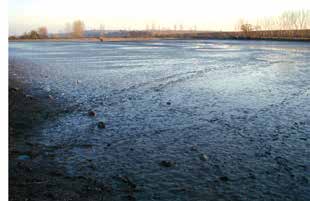chAPter 14 reduCing erosion and runoFF
Figure 14.5. Corn and alfalfa grown in rotation through alternating strips.
Figure 14.6. Equipment for manure injection with minimal soil disturbance.
enter the soil. Reduced tillage and the use of cover crops
need to be relieved by tillage. Direct injection of liquid
already help build organic matter levels, but regularly
organic materials in a zone-till or no-till system is a
providing additional organic materials like compost and
recent approach that allows for reduced soil disturbance
manure results in larger and more stable soil aggregates
and minimal concerns about manure runoff and odor
and stimulates earthworm activity.
problems (figure 14.6).
The adoption rate for no-till practices is lower for
livestock-based farms than for grain and fiber farms.
Other Practices and Structures for Soil Conservation
Manures may need to be incorporated into the soil for
Soil-building management practices are the first
best use of nitrogen, protection from runoff, and odor
approach to runoff and erosion control, but structural
control. Also, the severe compaction resulting from the
measures may still be appropriate. For example, diver-
use of heavy manure spreaders on very moist soils may
sion ditches are channels or swales that are constructed
Figure 14.7. Hillside ditch in Central America channeling runoff water to Figure 14.8. Grassed waterway in a midwestern cornfield safely channels
a waterway on the side of the slope (not visible). A narrow filter strip is
and filters runoff water. Photo courtesy of USDA-NRCS.
located on the upslope edge to remove sediment.
158
Building SoilS for Better CropS: SuStainaBle Soil ManageMent









